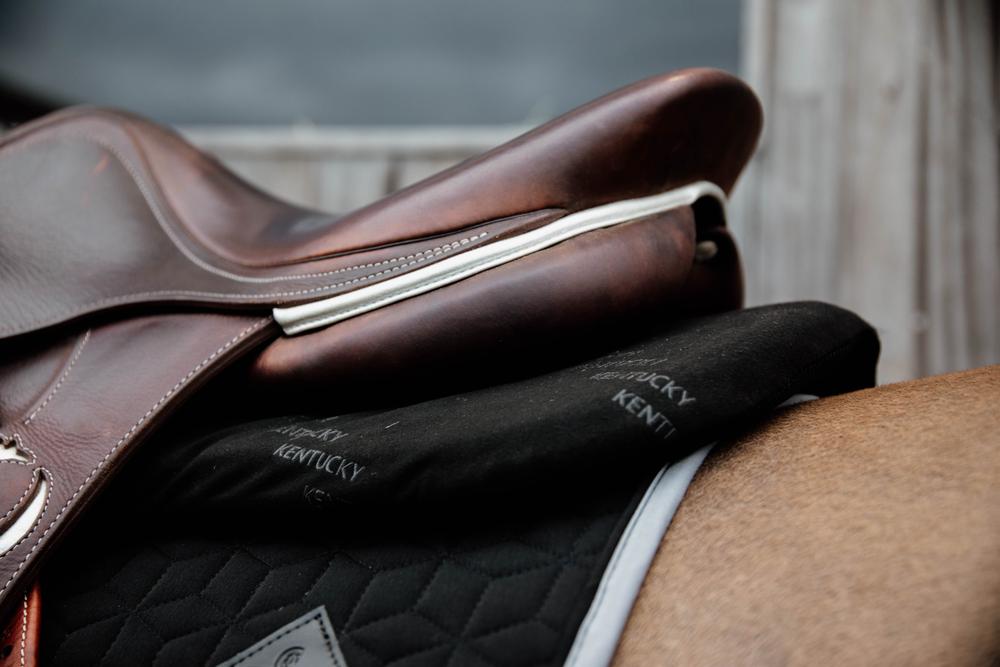
The basics of half pads
Half pads are a common thing in the equestrian world. You have memory foam half pads, impact-absorbing half pads, half pads with sheepskin and many more. In this blog post we’ll explain what the difference is between different kinds of half pads and what to keep in mind when buying a half pad.
What materials are used in half pads?
The biggest feature of half pads Is that it’s shock absorbent. The pressure is divided evenly on the horse’s back and can be used to offer a better saddle position on the horse’s back. To do this, memory foam is often used. The memory foam in Kentucky’s saddle pads is used in protective gear in the army. This ensures the best protection for your horse’s back while riding. Click here if you want to know more about why people use a half pad.
For our new half pads we used our famous 3D spacer. You may know 3D spacer, from some of our rugs and turnout boots. The 3D spacer is a honeycomb structure that has shock-absorbing performances. The 3D spacer had a cushioning effect that will move with the horse. As 3D spacer is used in baby mattresses, it will treat your horse’s back like a sleeping baby. It is also very air preamble, so the horse’s back can ventilate during exercise.
Difference between half pad thin, half pad thick and a correction pad
If you have a well-fitting saddle, we advise you to take the half pad impact equalizer thin. This is only 10mm thick, ensuring close contact with your horse while protecting it from impacts. The half pad thick can be used for small corrections, so for a saddle that’s a little bit too wide. You’ll still have a close contact feeling and the best protection for your horse. The pad can also be used on young horses. The saddle pad allows them to build muscles and corrects the saddle as it is often bought on the growth. If you are using your saddle on different horses and the saddle pad impact equalizer thick offers not the right correction. You can also use the correction pad. This pad has six shims within each insert different felt layers. This allows you to correct the saddle more precisely. Because you can balance the saddle precisely and it absorbs shocks too, it is the perfect pad to use on a horse that’s back in training after an injury.
Things you have to keep in mind if you want to buy a half pad
If you’re planning on buying a half pad, make sure the half pad is breathable. Otherwise the half pad will just heat up the back of the horse. Kentucky’s half pads are equipped with 3D spacer to ensure the best ventilation for your horse’s back. Also see if the half pad has some silicone grip to keep the saddle pad in place. Having a half pad that is constantly moving under your saddle or slipping away is not effective and very annoying. Our half pads are equipped with silicone printing to secure the position of the pad. If you want an extra fancy look, you can also use our sheepskin half pad. The sheepskin will also help the half pad sit in place. Last but not least, assure that the half pad has withers and spine relieving functions. Kentucky’s half pads have a special cut for the withers, which ensures less pressure on the withers and spine. For the best result with our half pads, we advise you to have your saddle checked by a saddle fitter.
How to wash a half pad
Kentucky Horsewear’s half pads are easy to wash. You take the foam inserts out of the pad and wash the cover at 30 degrees. Let the cover air dry completely before putting the foam inserts back into the pad.

